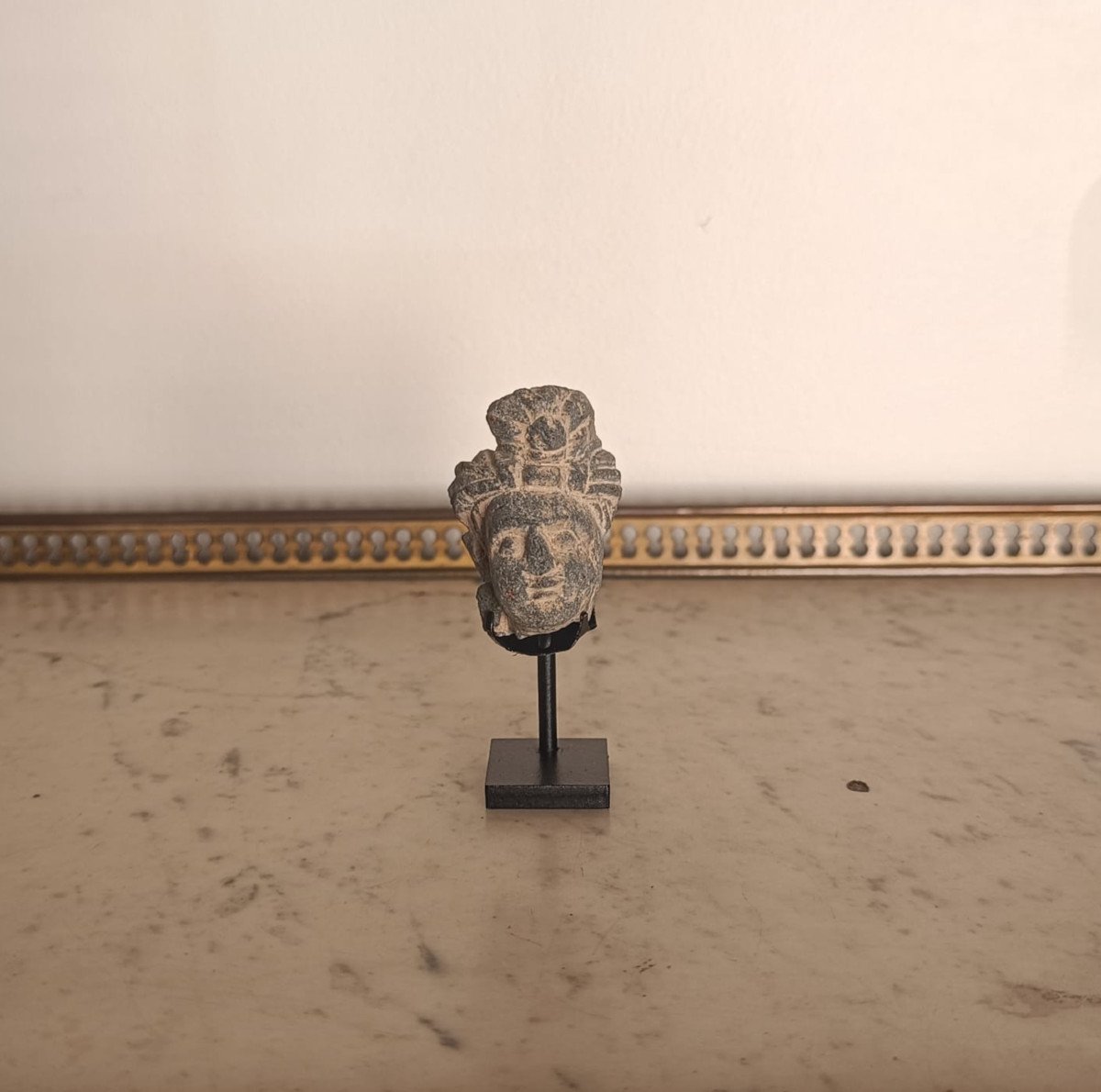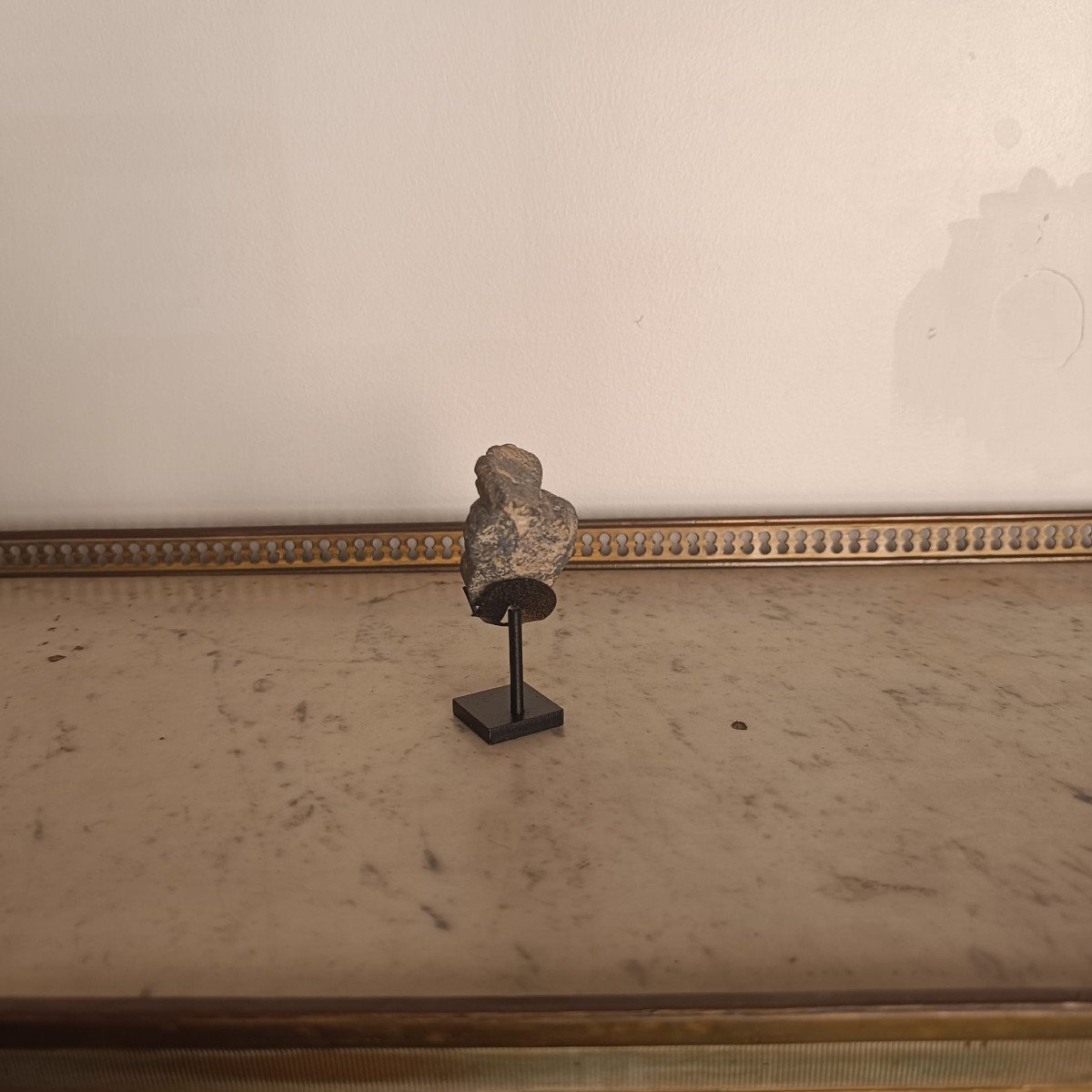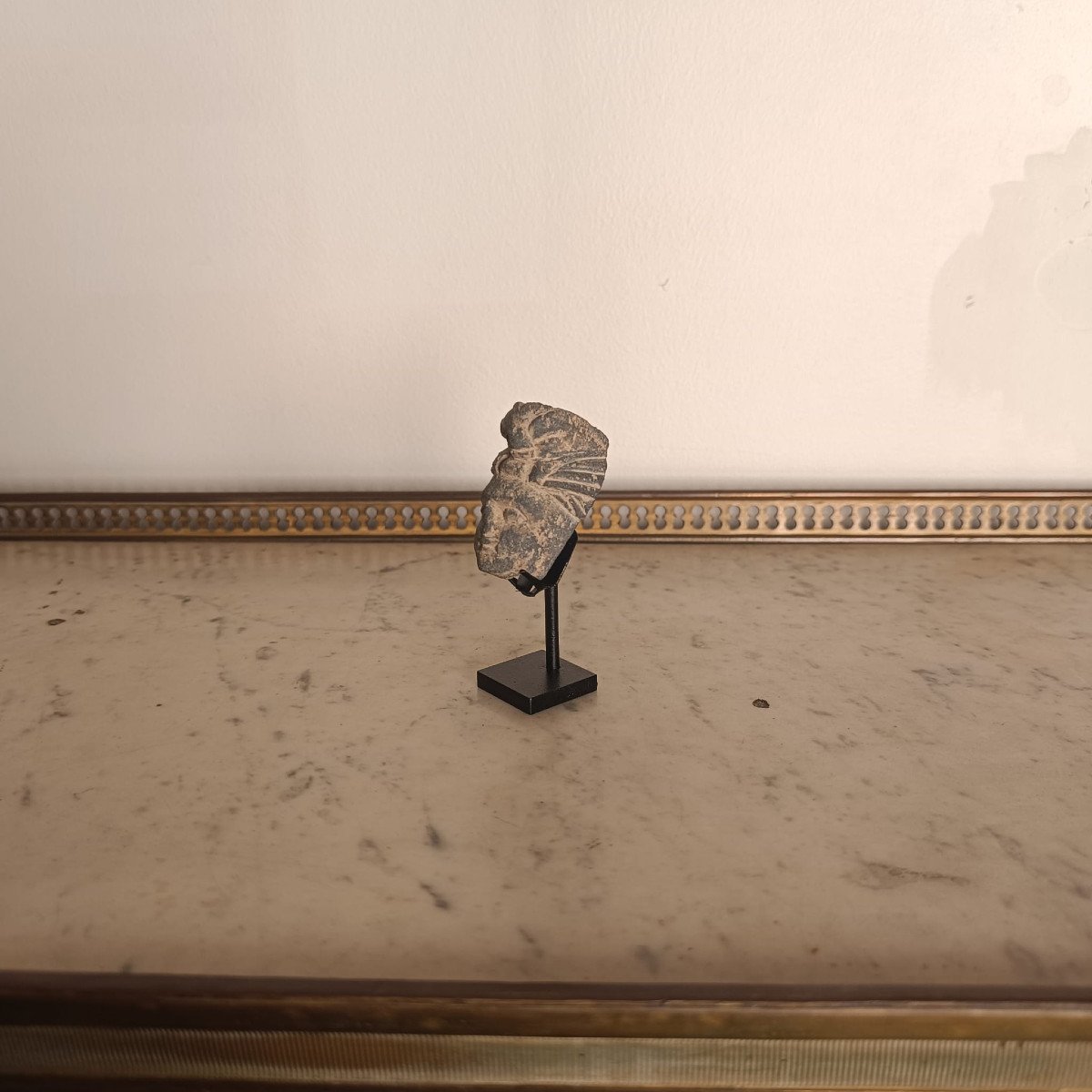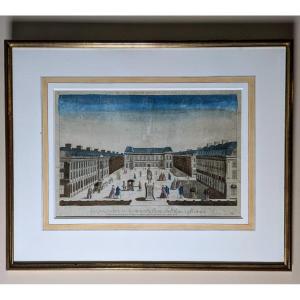Small fragment of bas-relief in gray-blue schist (typical material of Gandhara art) representing a head of Bhodhisattva from the front.
Modern custom-made base in painted steel and brass
1st century BC – 4th century AD
Dimensions: 3.3 x 2.4 x 1.7 cm
Dimensions with base: 7 x 1.6 x 1.6 cm
Greco-Buddhist art refers to all pictorial, statuary, toreutic and monetary productions resulting from the synthesis of Greek and Indo-Buddhist styles. This art was first born in Gandhara (Pakistan, Peshawar region, corresponding to the territory of the easternmost satrapy of the Achaemenid Persian Empire) at the beginning of our era, under the Kushan Empire, thanks to the cultural encounter between nomadic peoples of Central Asia, the Greek world, the Indian world and the Iranian-Persian world. Greco-Buddhist art is characterized in particular by a strong realism from Hellenistic art, transmitting movement, emotions and vitality of bodies, applied not only to the traditional figures of Eastern Greek art, but to the representation of the Buddha, bodhisattvas, and scenes associated with Buddhism. The works belonging to this art were mainly brought to our knowledge by the looting and orientalism of the 19th century and then by major archaeological work with the help of different countries, including the United Kingdom, France and Italy in the 20th century.























 Le Magazine de PROANTIC
Le Magazine de PROANTIC TRÉSORS Magazine
TRÉSORS Magazine Rivista Artiquariato
Rivista Artiquariato
